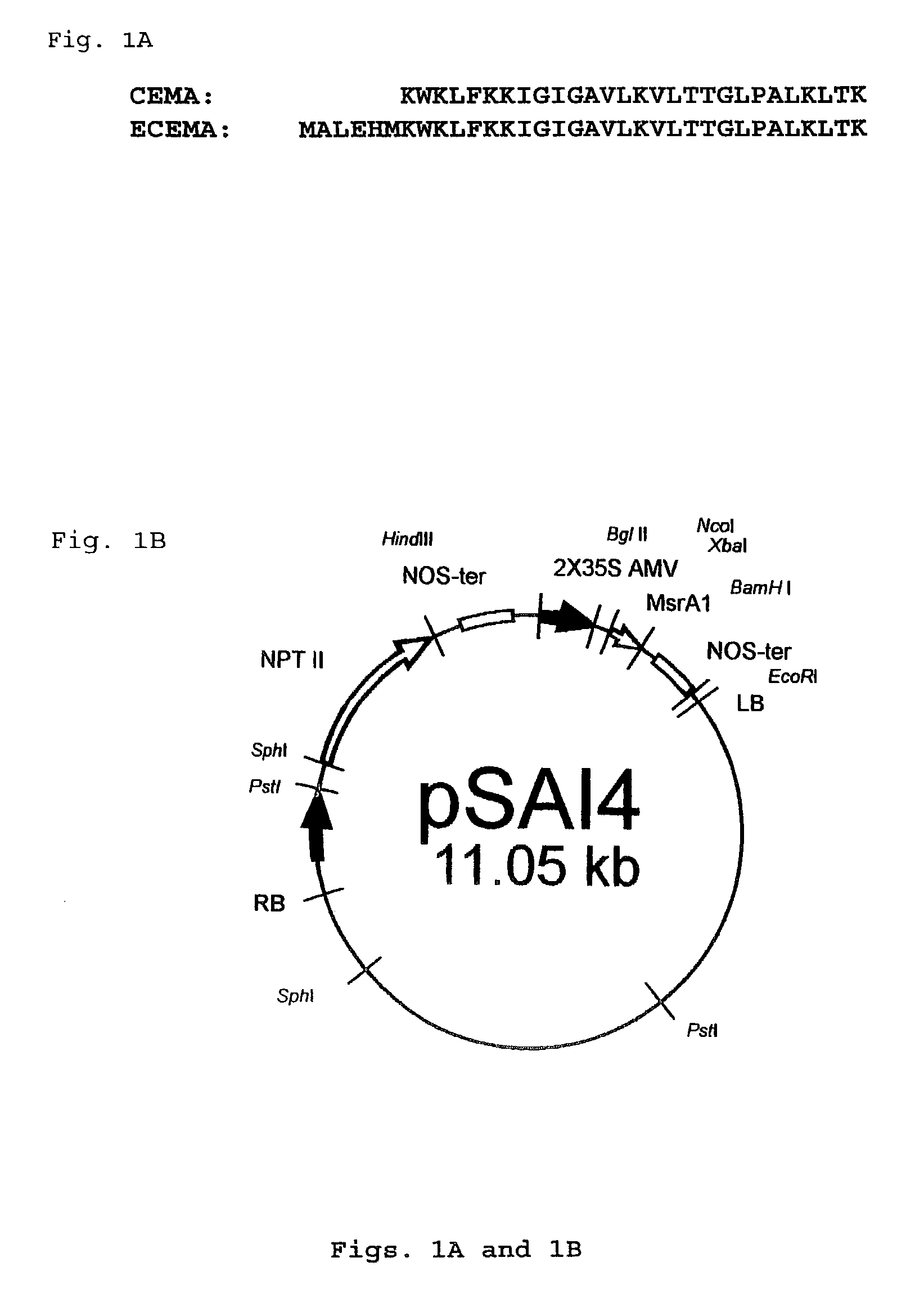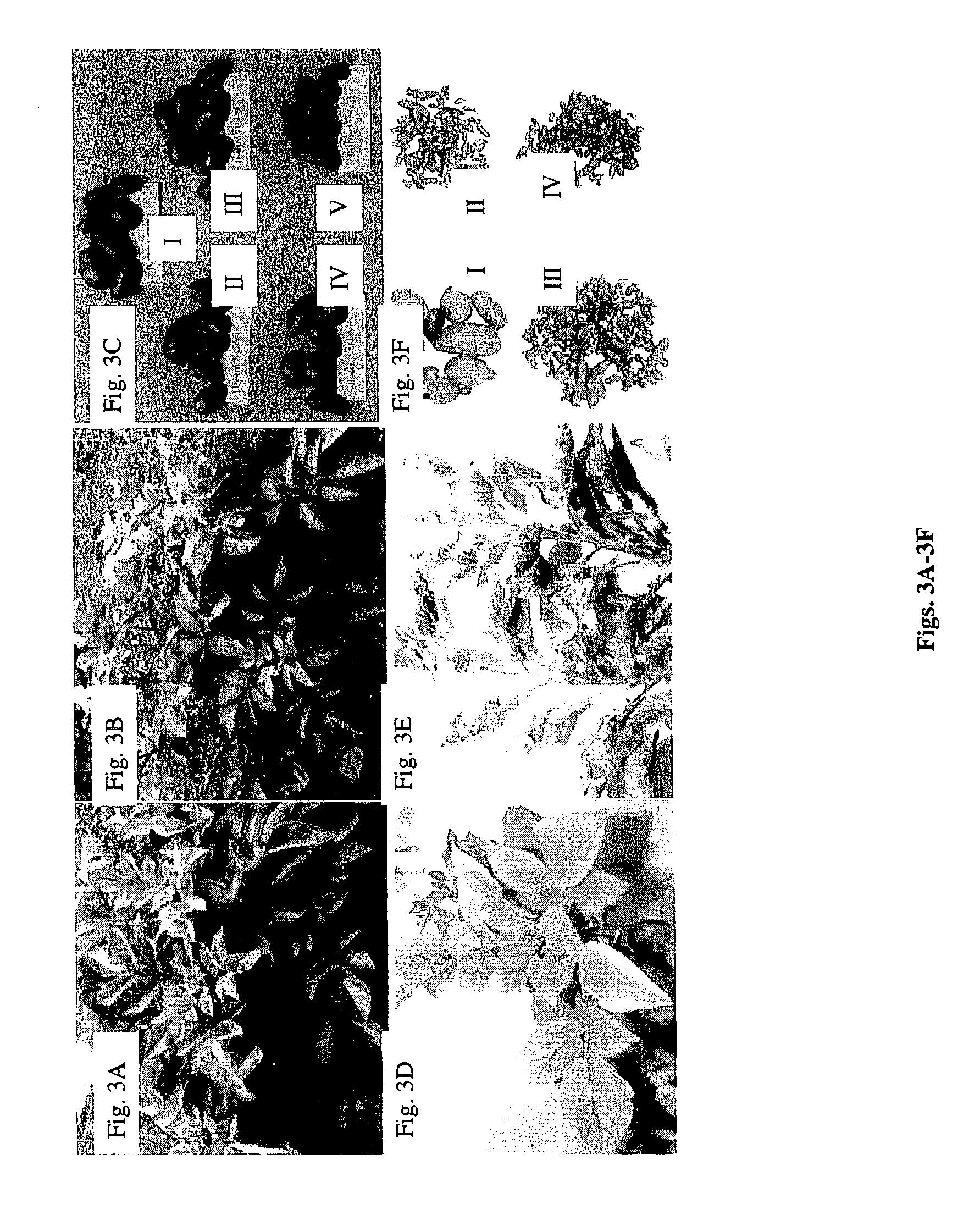Pathogen resistant transgenic plants expressing CEMA or CEMA-related peptides
a technology of cema-related peptides and pathogen resistance, which is applied in the preparation of peptides, animals/human peptides, and angiosperms/flowering plants, etc. it can solve the problems of human and animal toxicity, serious environmental damage, and inability to control plant pathogens (especially viruses), so as to facilitate the removal of the pro-region and reduce or increase the anti-microbial effect of cema-peptides.
- Summary
- Abstract
- Description
- Claims
- Application Information
AI Technical Summary
Benefits of technology
Problems solved by technology
Method used
Image
Examples
examples
1. Selection and Creation of Nucleic Acid Sequences Encoding the CEMA and CEMA-Related Peptides
[0131]The primers (Oligo #1: 5′-CAAGG AAAAA CGGTC TAGAG CATAT GAAAT GGAAA C-3′ (SEQ ID NO: 9); and Oligo #2: 5′-GAACT CGAGC AGCGA GCTCT TACTT AGTTA GCTTC-3′ (SEQ ID NO: 10)) were configured to have an XbaI recognition site at the 5′-end, and an BamHI-recognition site at the 3′-end of the amplified fragment, respectively. Plasmid pR78hproCEMA (R. E. W. Hancock, Vancouver, B.C.; Piers, et al., Antimicrob. Agents Chemother. 38:2311–2316, 1994) was used as a template for PCR. An amplified DNA fragment containing the sequence encoding ECEMA was purified using a NucleoSpin™ column (CLONTECH, Palo Alto, Calif., USA), digested with XbaI and BamHI, and inserted into the vector (Promega Corp., Madison, Wis., USA) that had previously been digested with XbaI and BamHI. The resulting vector was named pSAII.
[0132]The HindIII-EcoRI fragment in pBI121 (Clontech), containing a CaMV 35S promoter, a GUS gene...
PUM
| Property | Measurement | Unit |
|---|---|---|
| Fraction | aaaaa | aaaaa |
| Electrical resistance | aaaaa | aaaaa |
Abstract
Description
Claims
Application Information
 Login to View More
Login to View More - R&D
- Intellectual Property
- Life Sciences
- Materials
- Tech Scout
- Unparalleled Data Quality
- Higher Quality Content
- 60% Fewer Hallucinations
Browse by: Latest US Patents, China's latest patents, Technical Efficacy Thesaurus, Application Domain, Technology Topic, Popular Technical Reports.
© 2025 PatSnap. All rights reserved.Legal|Privacy policy|Modern Slavery Act Transparency Statement|Sitemap|About US| Contact US: help@patsnap.com



